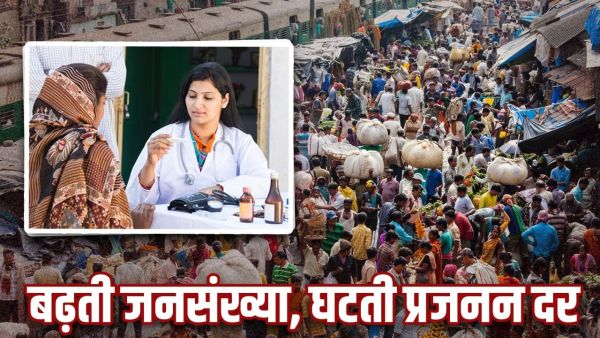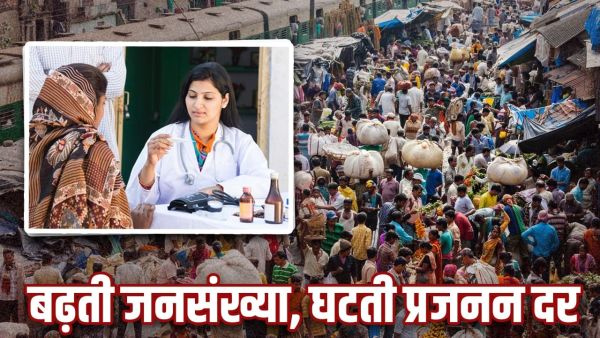

Growing population in India
India is currently the world's most populous country, whose population has reached about 1.46 billion. According to 2025 reports by United Nations Population Fund (UNFPA), In the coming four decades, this number will go to 1.7 billion and then gradually decline will begin. The report states that India's Total Fertility Rate (TFR) has now come at 1.9, which is below the replacement level 2.1. This means that not every generation is able to replace itself completely. This situation may be seen to control population growth, but the big issue hidden behind it is that people are not able to build a family according to their wish. Especially in urban areas, economic pressure, changing lifestyle and health related challenges have increased the trend of avoiding the birth of children. This is the reason that despite the increasing population, the risk of infertility is increasing rapidly.
There are many reasons for India's fertility rate fall. Families are still large in rural areas, but the situation is completely different in urban areas. Here Eduked Middle-Class couples are hesitant to produce a child due to economic insecurity, job instability and expensive houses. Apart from this, late marriage, constant work pressure and taking responsibility for becoming a mother father in old age is also a big reason. Lifestyle related habits such as stress, unhealthy eating, smoking and alcohol consumption are affecting the fertility rate. At the same time, diseases like PCOS, thyroid and hormonal imbalance are increasing rapidly in women, due to which the problem of pregnancy is becoming more difficult. In this way, despite increasing population, many people of the society are facing difficulties in getting their desired children.
Infertility and population problem
UNFPA report It is clear that the problem is not only about population control, but the freedom of decisions related to producing children. According to the survey, many people face unwanted pregnancies, while the same people are not able to get their desired children. The fertility rate in urban India has fallen from 1.6 to 1.7, which is a matter of serious concern. If this situation persists, then by the year 2100, India's population can fall to about 93 crores. This will not only affect the economic benefit from the population, but will also affect the economy and society of the country.
One reason for infertility is that today's lifestyle has increased pressure on the natural pregnancy process. Late pregnancy increases problems in women and sperm quality decreases in men. Apart from this, fertility treatment like IVF, IUI is not available to all due to expensive. Therefore, this challenge has become a big issue of not only personal but public health. If the right steps are not taken from now, then the balance of the population in the future can be messed up and serious difficulties may come.
Solutions and suggestions
It is necessary to make fertility related health services easy and inexpensive for all.
It is necessary to give information about healthy lifestyle and good diet to the youth.
It can be beneficial to seek medical advice while considering late marriage or becoming a parent.
PCOS, thyroid and hormonal problems in women are necessary to check and treat on time.
Society and government institutions should jointly take measures to increase fertility awareness.
-
Telangana, Andhra Pradesh Weather LATEST update: States currently experiencing monsoon break? Check NOW

-
'Humans in the Loop' review: A thoughtful look at new AI tech and age-old fault lines

-
Madhya Pradesh September 5 2025, Weather Update: State Braces For Continuous Rain, Stormy Skies; Heavy Showers Expected In Bhopal, Indore & More

-
Celebrating PM Modi's 75th Birthday: Odisha's Grand Housing Initiative and Tree Plantation Drive

-
Unlock Exciting Rewards with Garena Free Fire Max Redeem Codes for September 5, 2025
